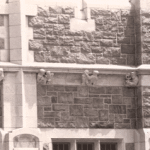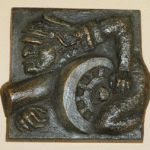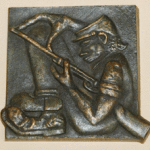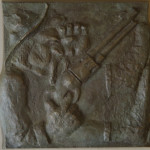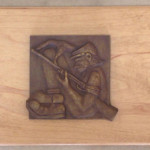The grotesques of West point are steeped in a tradition that goes back 2000 years. The grotesque, a fanciful mural or sculptural decoration, has origins obscured in antiquity, however, there is evidence that it was part of Roman architecture and thus derived from pagan imagery.
Often confused with a gargoyle, the grotesque serves no architectural function, but is purely decorative. The forms include imaginary animal, human and plant images in a variety of weird mixtures and diverse expressions. They are not always distorted or grotesque. Some have symbolic or heraldic significance; most do not. Their vigorous and spontaneous forms no doubt appealed to the designers of the USMA buildings at the turn of the last century.
The original grotesques were cast in cement from models rendered by New York sculptor Lee Lawrie around 1910. The theme on the academic buildings depicted the range of activities one would expect within the walls: from experimentation with the elements to sleeping cadets. On the cadet barracks the themes followed the development of arms and armaments over the centuries.
When the Corps of Cadets expanded during the sixties, many grotesques were displaced from the old West Academic Building and the New North Barracks and were reinstalled in the interior of the new wings of Washington Hall. Others can be found on the exteriors of the Old East Academic Building/Library, the Old Hospital, and Headquarters Building (Taylor Hall) and Arvin Gym. There, tucked in the corners of the gothic structures, they continue to surprise and delight the careful observer.
I have adapted the format of the original sculptures to one of bas-relief, changed the material to bronze and reduced the scale, but the spirit of the originals has been retained.
